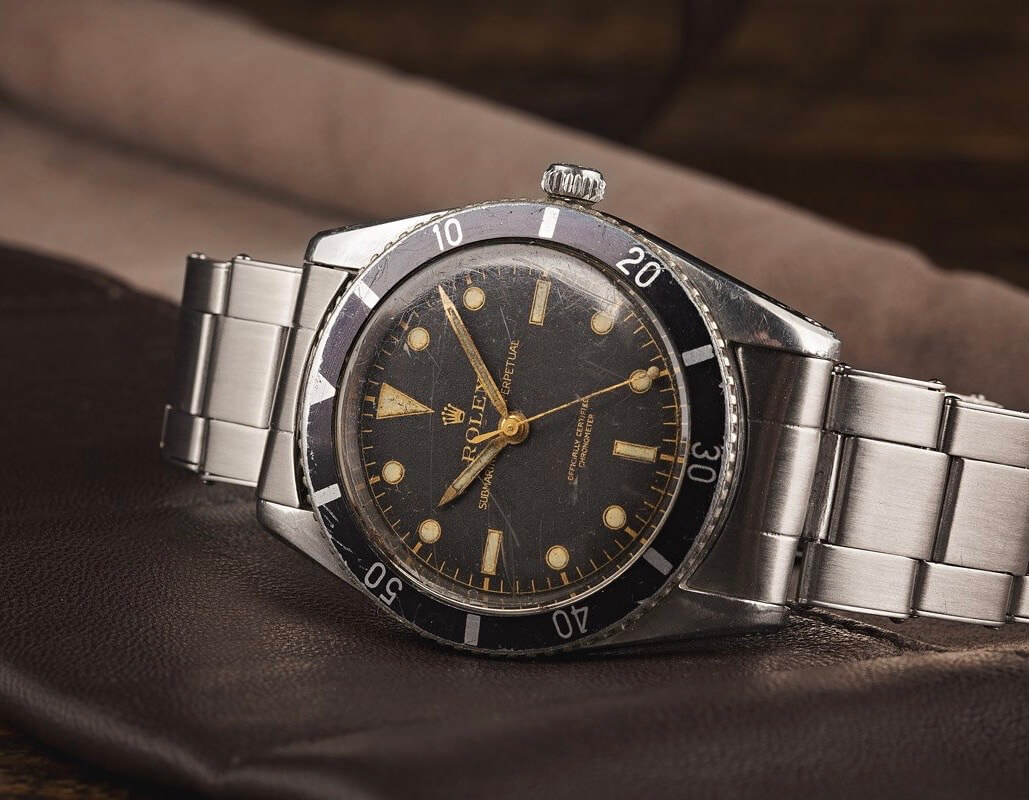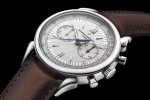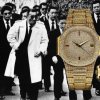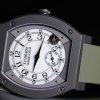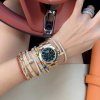When it comes to one of the pioneering and cult brands of the watch industry, there’s a lot to say. On the other hand, we have to choose carefully what we are to say, because the Rolex brand has a deep-rooted history, and a group of collectors and enthusiasts who know very well and keep up with this history. If all those concerned with the world of watch were asked a question such as “what if you have to choose just a single watch?”, the answer you get would probably be the ‘Rolex Submariner’.
Needless to say that one of the most important actors of the steel sports watch concept, which is very popular nowadays, is Rolex Submariner. Among the main reasons why Submariner is such a popular and sought-after watch; we can enumerate the reasons such as its design with a similar design language as that of its first model produced, its simplicity enabling it to be worn in almost any occasion, its solidity and durability, and its utility. Of course, we owe it firstly to 007 James Bond that the Submariner became a pop culture icon. The famous agent was seen for the first time on the screen in 1962 with “Dr No” movie.
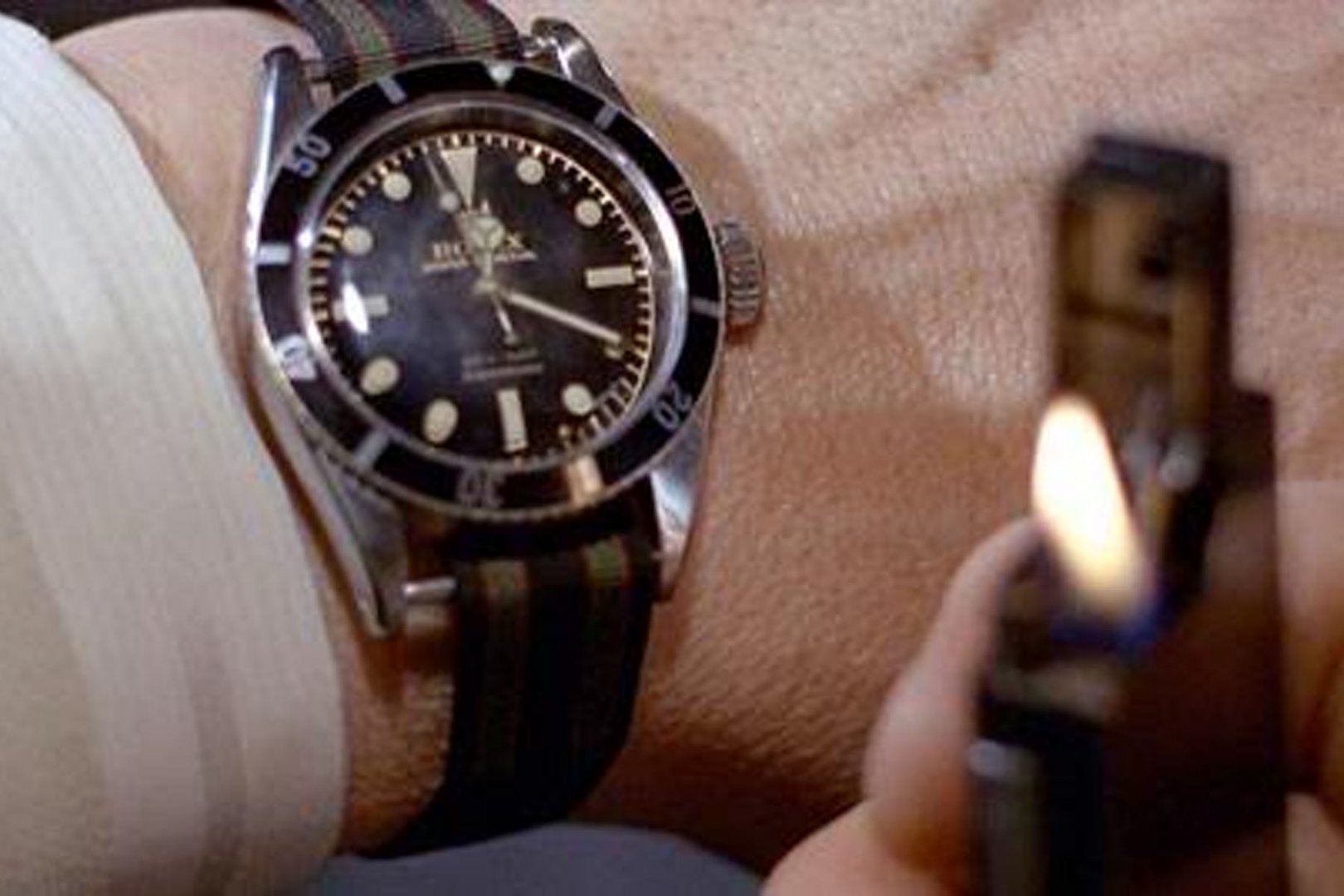
And of course, 007 was wearing a Rolex because his creator, Ian Flemming, wanted it this way. (Ian Flemming himself was wearing a Rolex Explorer 1016 during the years he invented James Bond character.)
On the other hand, just before the Submariner had hit the stores, there was another movie and another hero on the background.
Our film is Le Monde Du Silence (The Silent World), released in 1954. Based on the book written by the French oceanographer and film director Jacques Yves Cousteau in 1953 and holding a revolutionary qualification in its genre as one of the first submarine documentaries filmed in colour, the footages of the film were shot in the Mediterranean, the Persian Gulf, The Red Sea and the Indian Ocean.
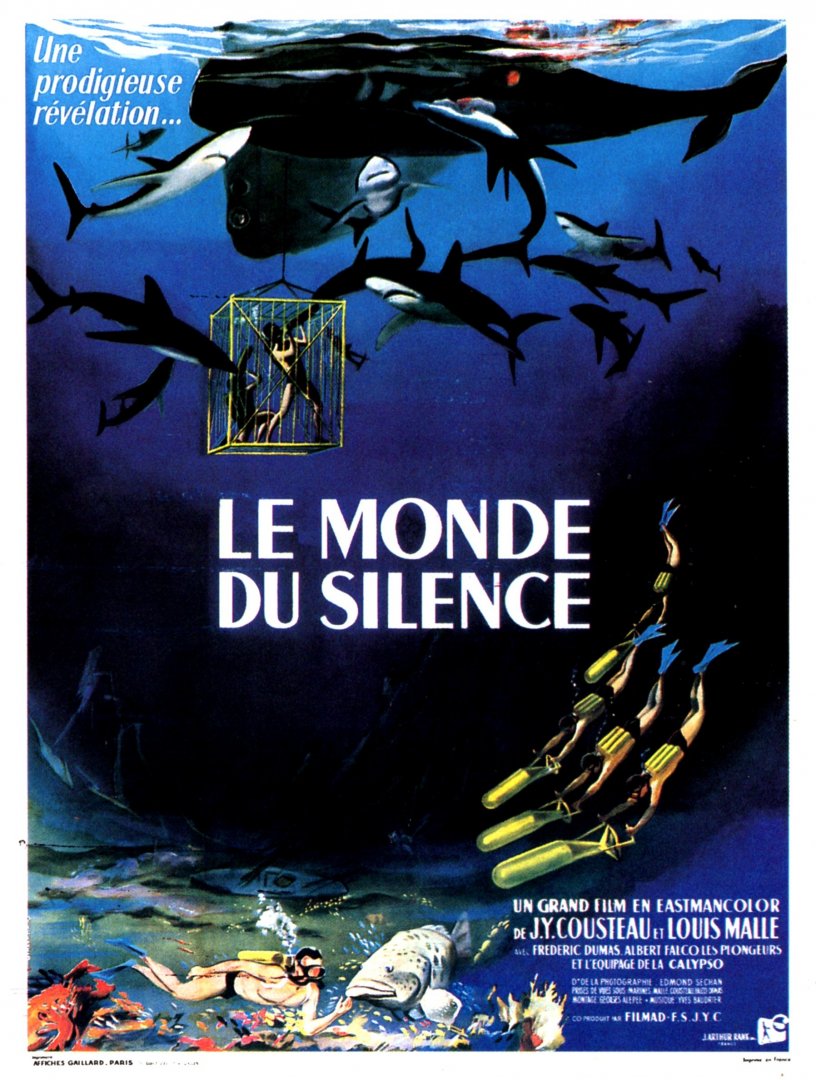
The picture below shows Captain Cousteau looking at the radar scope on the bridge of his legendary ship Calypso during the footage of “Le Monde Du Silence.” The watch on Cousteau’s wrist is believed to be a prototype of Submariner. (ref.6204)
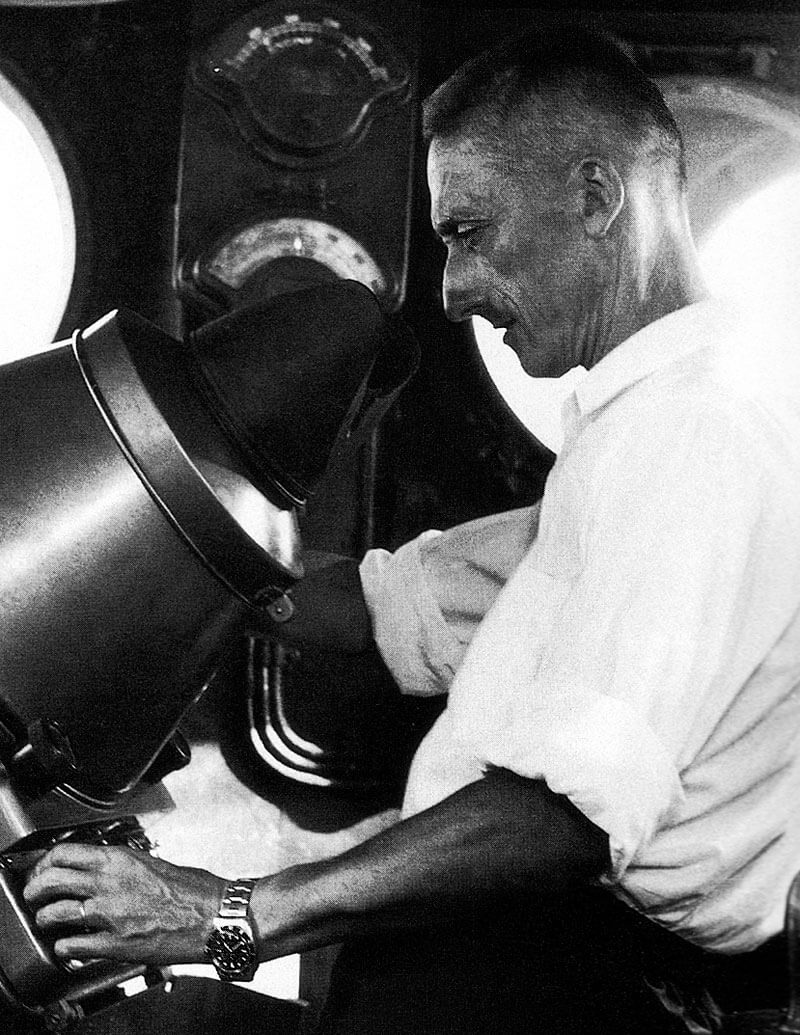
Since it is a known reality that Jacques- Yves Cousteau and Rene- Paul Jeanneret, a senior executive at Rolex during those years and a diver at the same time, were close friends, it is quite a reasonable story that Cousteau might be testing the Submariner before it was released to the market.
While talking about the emergence of the Submariner, it is impossible not to have a glance at the Rolex Turn-O-Graph (ref.6202) that gave the Submariner its DNA.
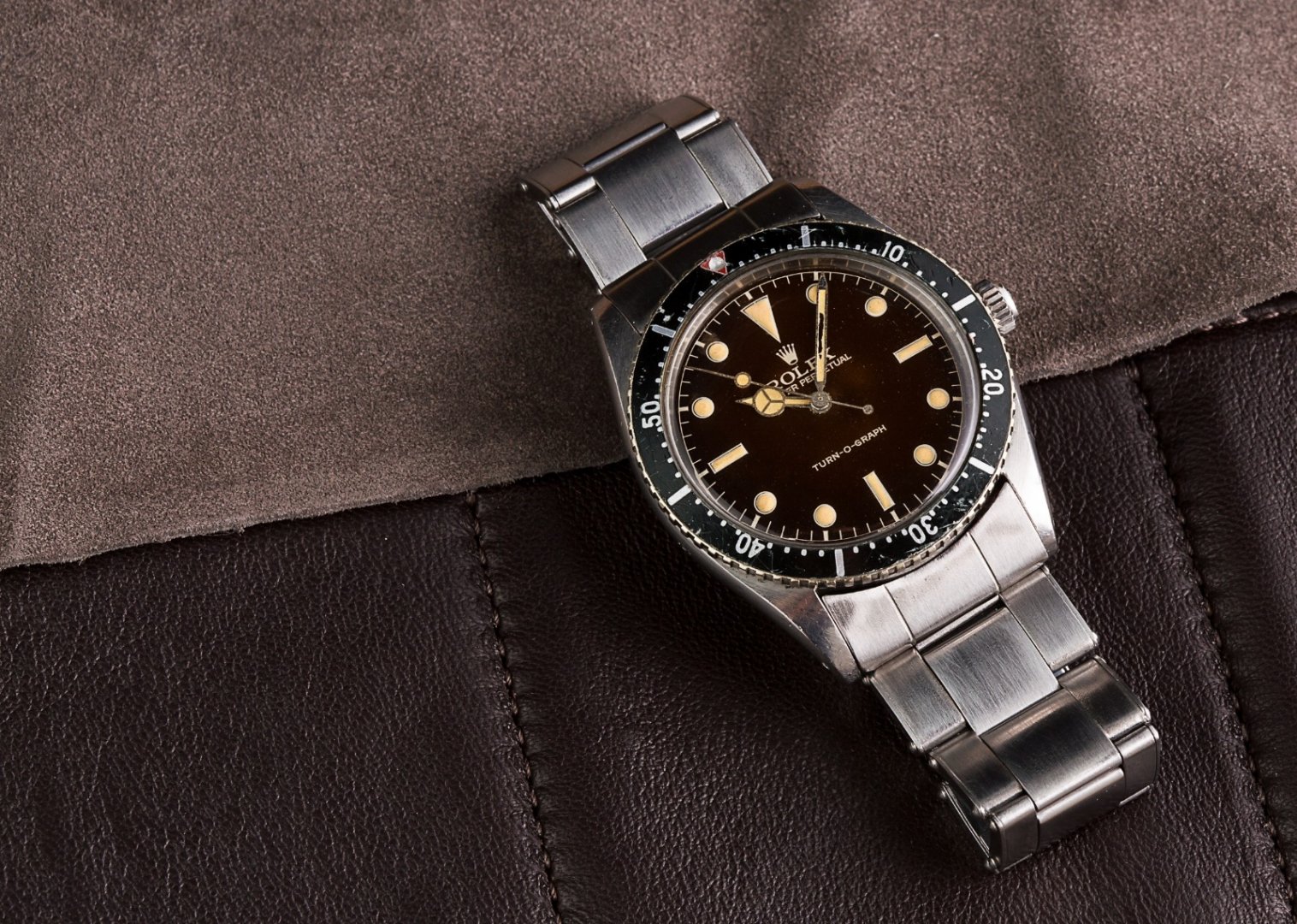
Soon after the Turn-O-Graph ref.6202 which was introduced at BaselWorld 1953 fair, Rolex launched the first Submariner ref. 6204. In 1954, Rolex put three different Submariners on the market; these were ref. 6200, ref. 6204 and ref. 6205. Although ref.6200 is smaller than ref. 6204, it is seen, when searched out, that the smallest serial numbers had been engraved on the cases of the ref.6204 Submariners. Eventually, the ref. 6204 is accepted by the collectors as the first Submariner commercially released to the public.
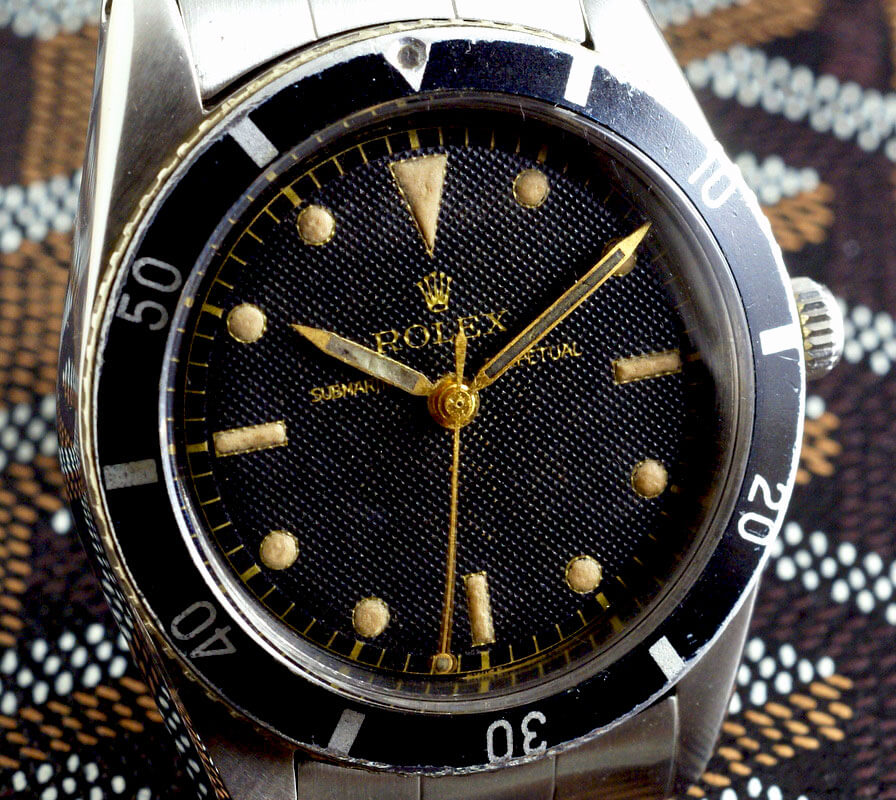
The first Submariner had a honeycomb or gilt dial, thin “pencil-style” hands, a seconds hand that has a lollipop at its very end and a twinlock small crown of 5,3mm diameter. The watch had an A260 movement and this one was probably the most credible movement Rolex had at those times. The Oyster case sat flush with an extra thick tropical acrylic at the top and a screw down (bubble-style) caseback at the back. These bubble-style casebacks were used because of the movements fitted in the first generation Submariners. The dial had neither COSC certificate marking nor waterproofing reading on it. Having a tool watch appearance with its minimal ornamentation and printing, 6204 was crafted with a high-polish finish on the bevels of its lugs and a satin finish on almost all remaining surfaces. The case and the caseback was made of steel, and the bezel of a brass alloy. On the bezel, there was a radium paint hole inside the triangle at the sixty-minute marker; since this radium paint often cracked and crumbled out in time, today we see only a hole in the samples. Its water resistance depth was 100 meters.
Another Submariner introduced in 1954 was the ref. 6205, the name of which, among collectors, was the ‘clean dial’. Of course, there is a reason for this naming. The dial had only OYSTER PERPETUAL printing under the Rolex marking. It did not read Submariner anywhere. Collectors and researchers believe that Rolex did not use Submariner name since she had not got it legally registered yet and continued to use it in the future models after the problem was resolved; and it is a fairly reasonable explanation for the initial lack of Submariner printing.
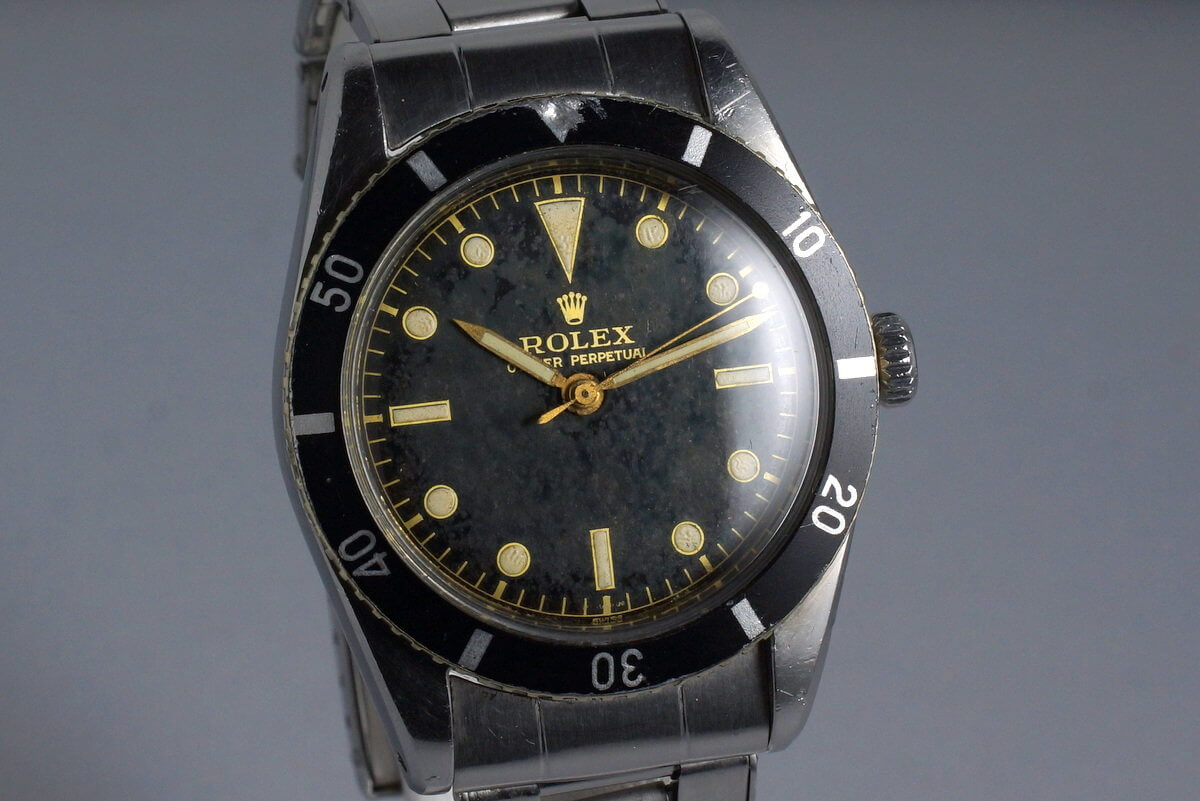
Thin pencil hands were used in ‘clean dial’ 6205s as in 6204s and it was the last Submariner having these hands. The case became a little bit thicker. The winding crown, which was enlarged from 5,3mm to 6mm, did not have crown guards on either sides.
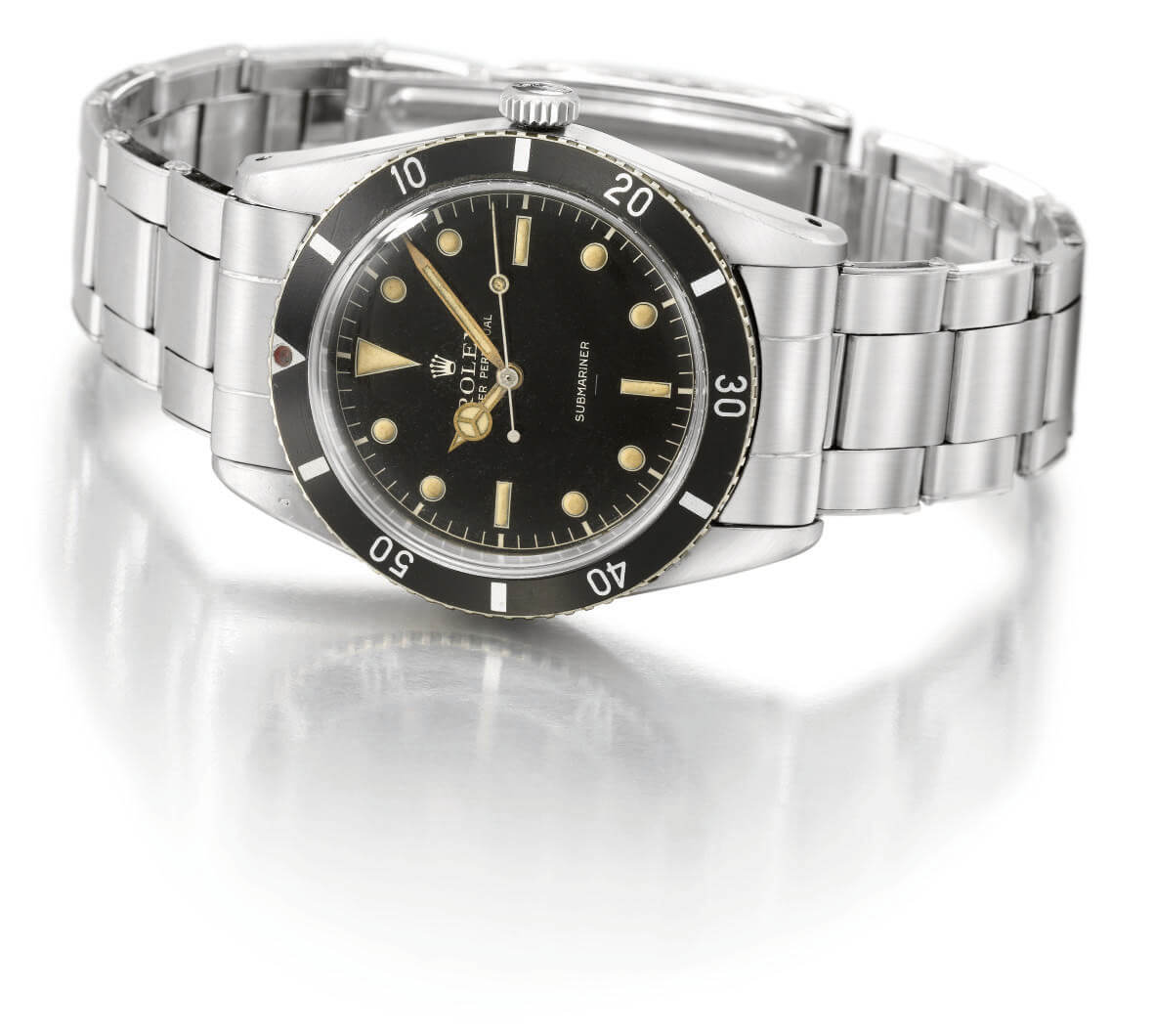
Let’s get down to later-era 6205s. After the Clean Dial model had been produced for a while, I guess when the registration problem I mentioned earlier was resolved, the name Submariner came back on the dial with an iconic addition – ‘the Mercedes hands’. In addition to the Mercedes hands, the small tip at the end of the seconds hand, which is called the lollipop, moved towards the middle. Like ref.6204, ref.6205 was also fitted with A260 movement and had a water resistance depth of 100 meters.
When it comes to ref.6200, things get a little bit complicated. Although 6200 was produced after 6205, it has a smaller reference number. The reason behind this may be the fact that 6200 had been designed and developed earlier than 6204 and 6205.
The most important feature in this reference is that the dial bears Explorer style 3-6-9 hour indexes. Baton indexes are preferred for the remaining hour indexes.
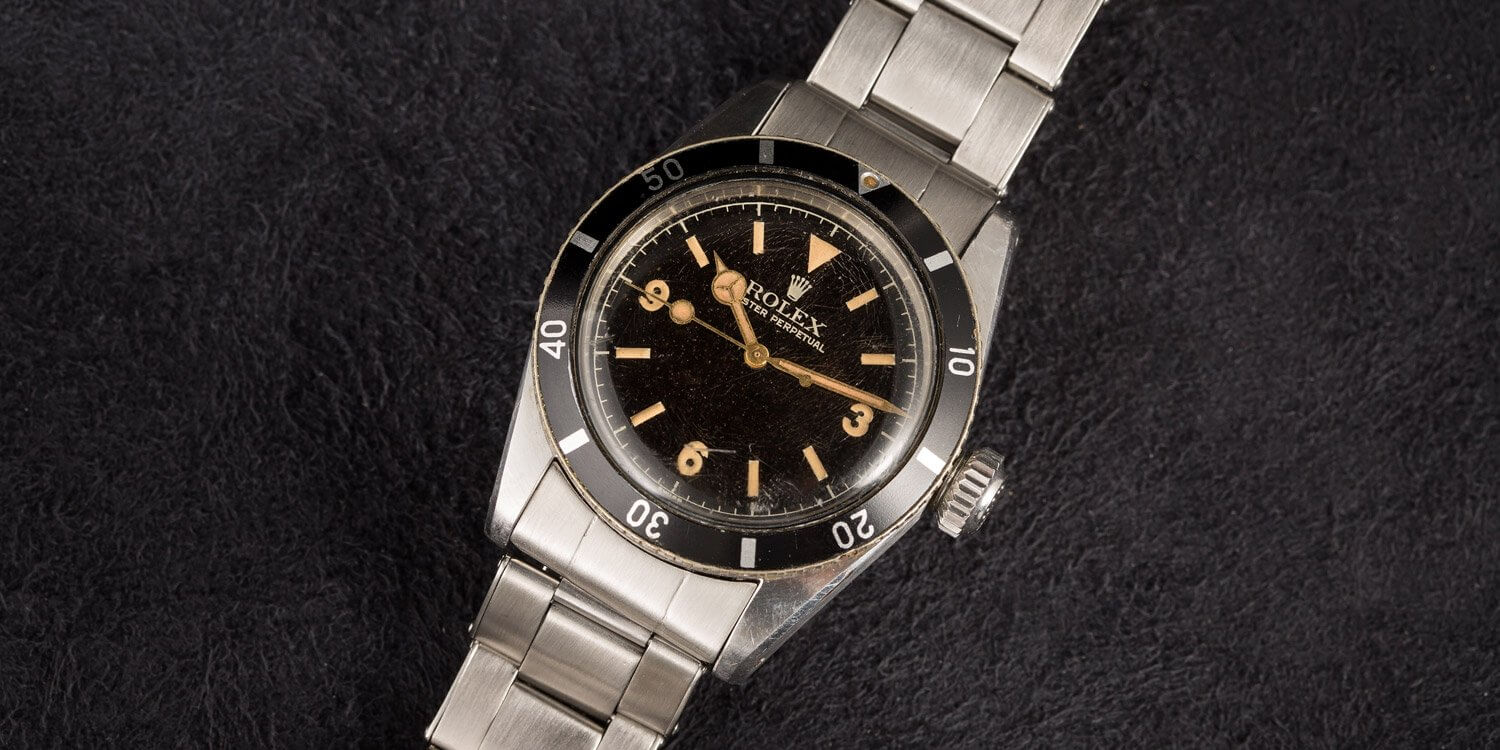
In this reference, two different dials were used basically; one with a big logo and without Submariner printing, and the other with a smaller logo and Submariner printing. Another difference of the watch from the earlier references was that it had a bigger crown with an 8mm BREVET printing.
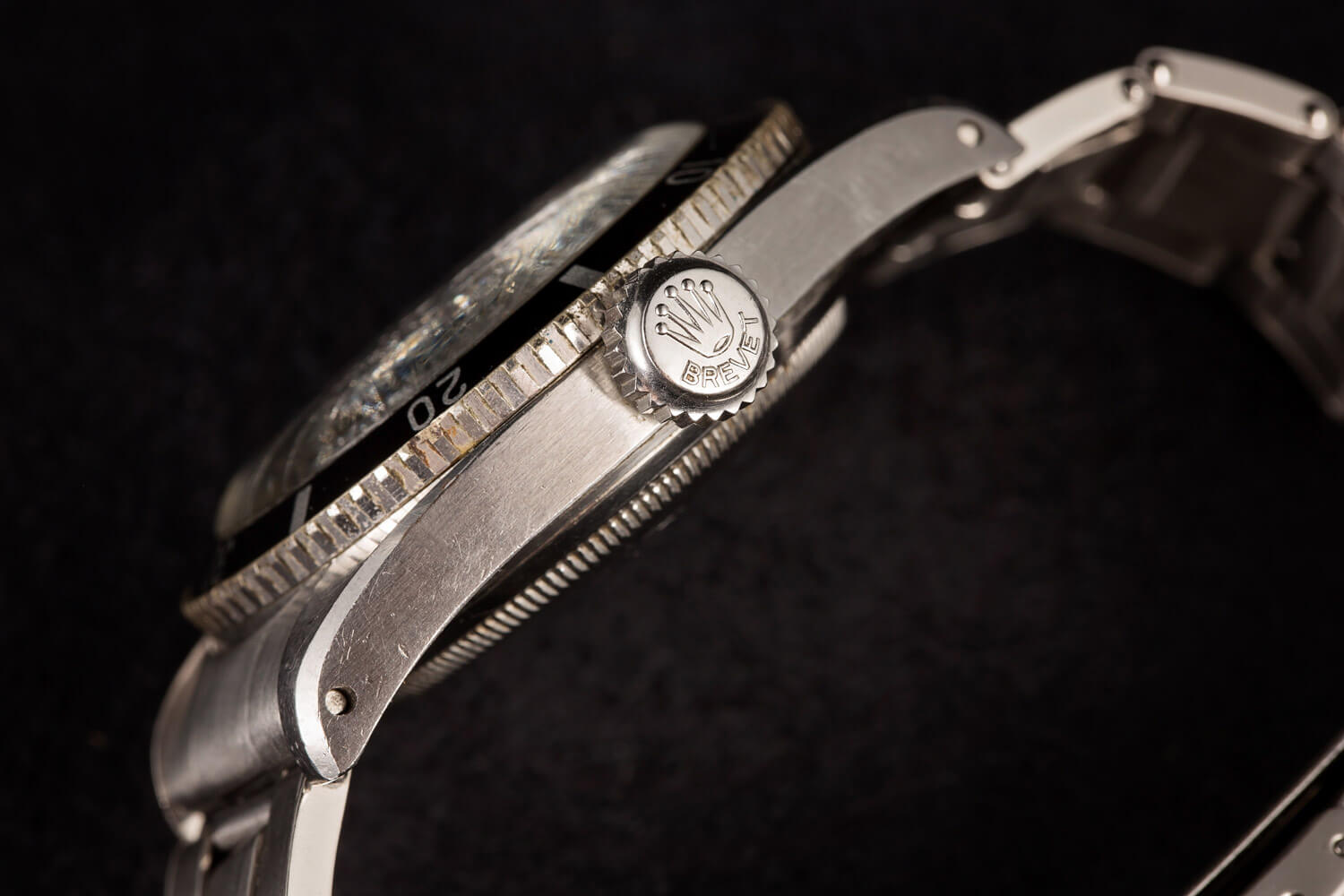
As distinct from two previous references, the watch was equipped with an A296 movement and had a water resistance rate of 200 meters. The one and only known sample of 6200 bearing the Officially Certified Chronometer inscription on its dial was sold by Christies for 458,000 CHF.
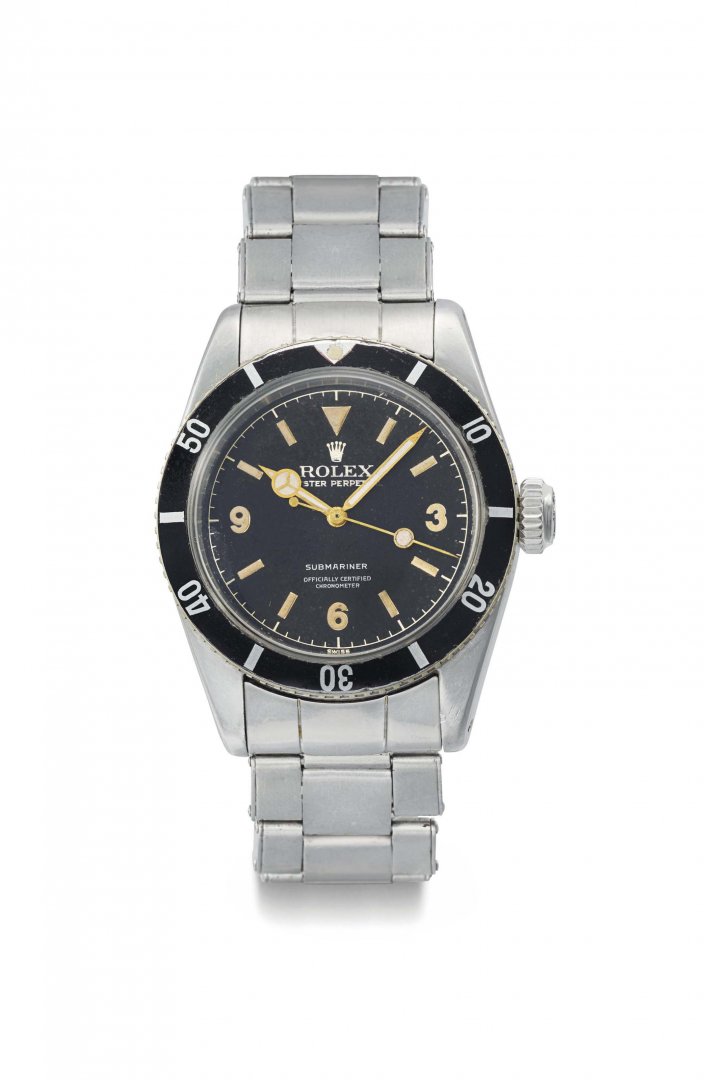
Until its version for sale now, Rolex Submariner has undergone many upgrades such as gilt dial, matte dial, lacquer dial, chronometer certificate, date, sapphire crystal and ceramic bezel. Throughout history, its special models, like Comex and Milsub, has been produced. In 1969, a gold Submariner (ref.1680) was crafted for the first time; apart from black dial, blue and green dials have been produced. Today Submariner has been offered for sale fundamentally in variants such as green dial with date and black dial with date or no date on steel, blue and black dials on steel&gold (Rolesor), blue and black dials on 18k yellow gold and finally blue dial on 18k white gold (except the jewellery versions).

The Submariner’s story is a fairly long one, having chapters that have not been illuminated yet. Who knows, we may have a glance at another chapter of it in the future.

